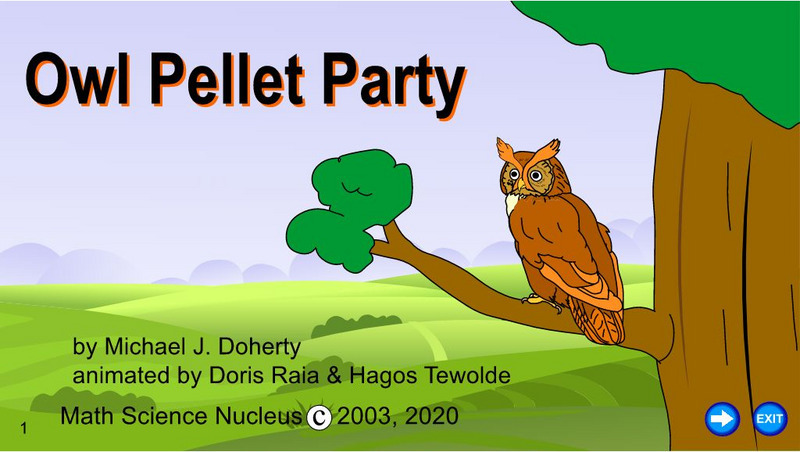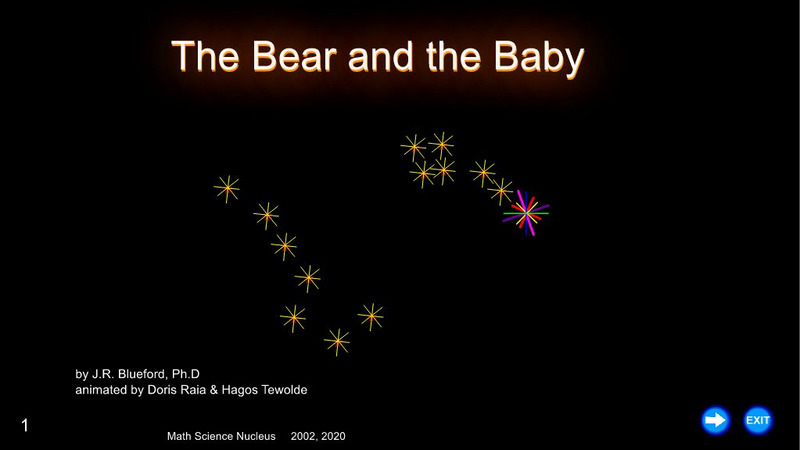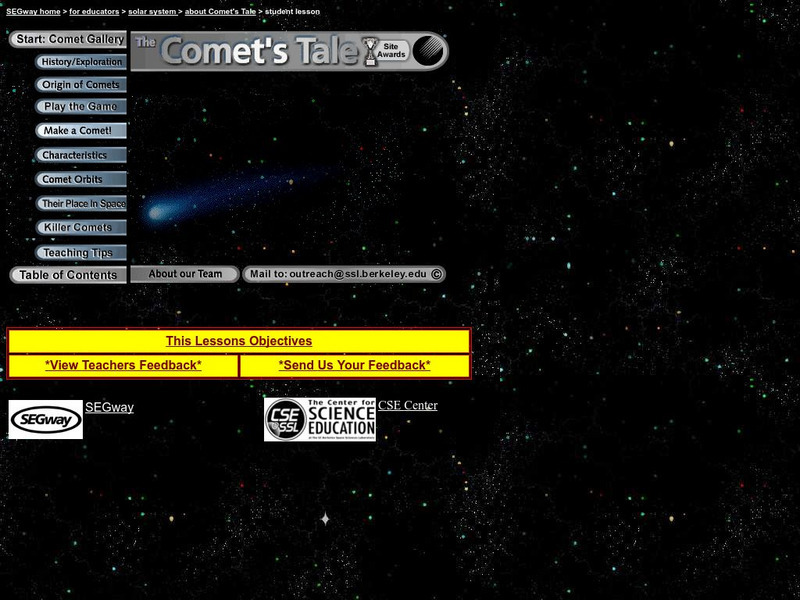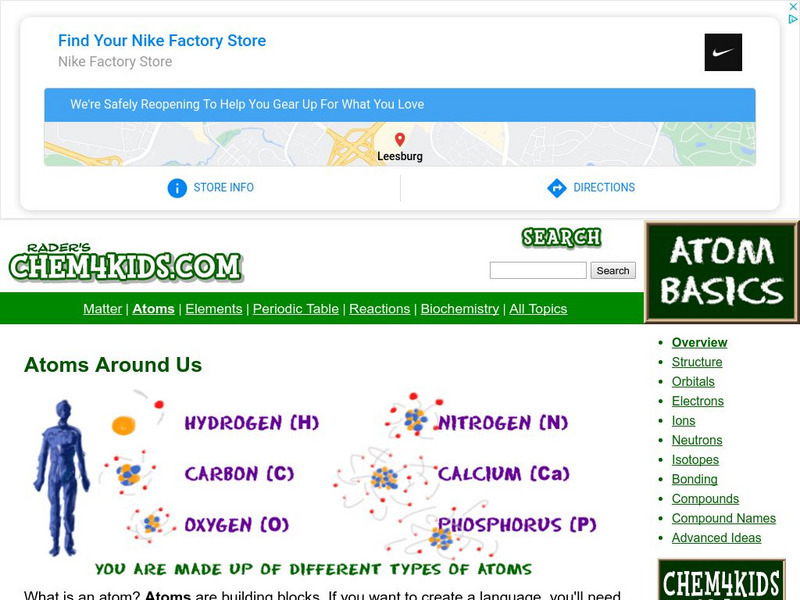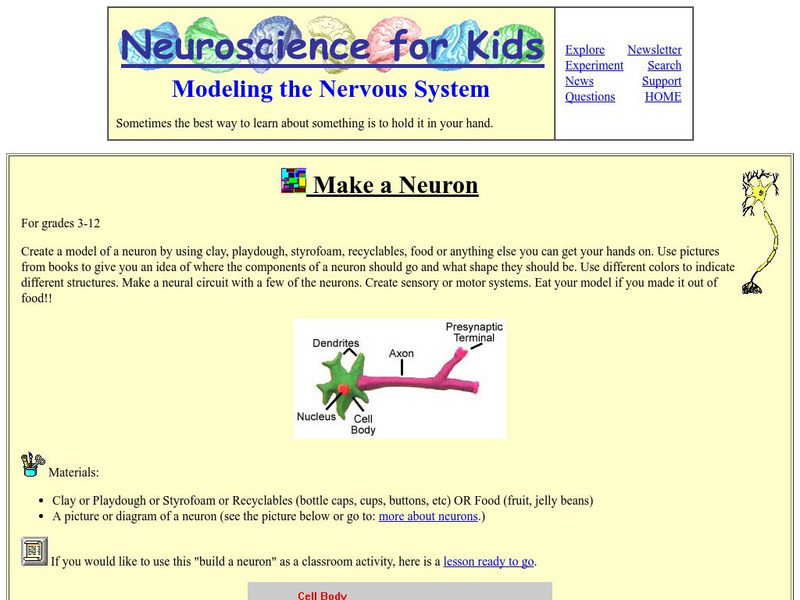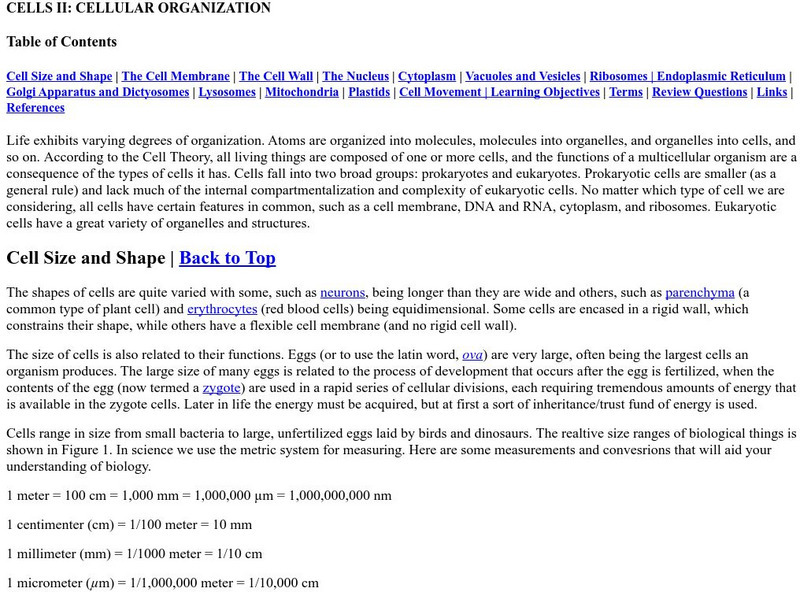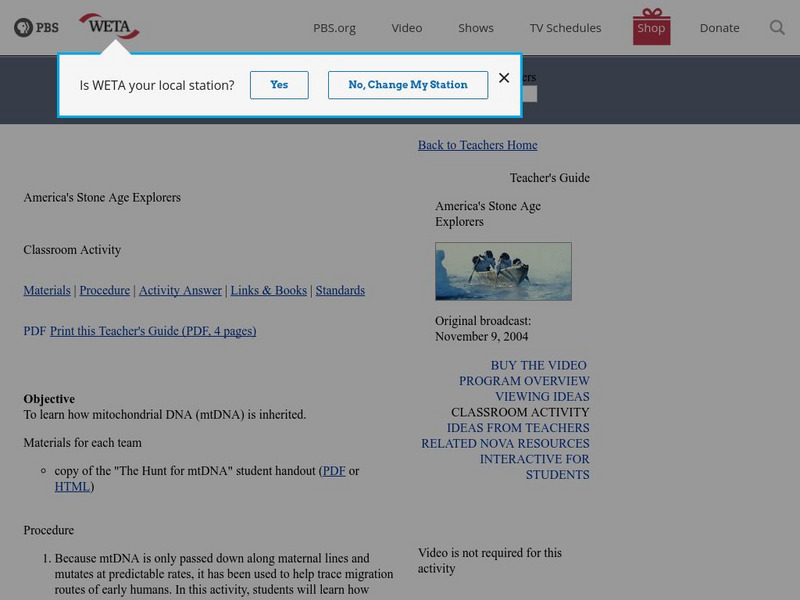Math Science Nucleus
Math/science Nucleus: Owl Poem Animation
This animation told in a storybook format explores the food cycle generated by the owl. It begins with the owl's consumption of food, then the food provided other animals through that consumption and so on.
Math Science Nucleus
Math Science Nucleus: The Bear and the Baby
This animation discusses the history of the constellations and the naming according to myths. The specific constellation dealt with in this animation is Ursa Major and Ursa Minor (the bear and the baby).
Biology 4 kids
Biology4 Kids: Prokaryotes Missing a Nucleus
What is the cell structure of a prokaryote? Check out these cells with unorganized nuclei featured.
Math Science Nucleus
Math/science Nucleus: Rocket Trip Animation
Animated sing-along storybook "Zoom Zoom" takes readers on a ride to the moon.
Curated OER
Math/science Nucleus: Water Cycle Animation
This animation, in a storybook format, discusses water and the water cycle.
Math Science Nucleus
Math/science Nucleus: Wetland Animation
This animation in storybook format tells the story of Tules Pond and also gets into pond and lake ecosystem information.
Math Science Nucleus
Math/science Nucleus: Electrons and the Hairy Monster
This animation discusses electrons and the properties of electrons in a storybook format featuring hairy monsters, strange rocks, and fun animations.
Math Science Nucleus
Math/science Nucleus: Mammoth Mary Animation
This animation, in a storybook format, discusses a wide variety of prehistoric animals from the mammoth to the mastodon.
University of California
Univ. Of Cal Berkeley: The Comet's Tale
Site provides extensive information in the study of comets. Includes excellent graphics that depict what comets look like as they travel through the solar system. Also includes information on how comets may have effected the Earth's...
Chem4kids
Chem4 Kids: Atoms
This site provides a detailed overview of atoms. Content explores an atom's structure, as well as what ions are, how atoms bond, what compounds are (including how to name compounds), and what isotopes are.
NASA
Nasa: Comet Hale Bopp Images
This site contains 5,161 images of the Hale-Bopp comet from 1995 to 2000. This incredible photo archive is definitely worth a visit.
Florida State University
Florida State University: The Rutherford Experiment
A simulation of the Rutherford experiment. Includes an animation and an explanation of the history behind the experiment.
American Chemical Society
Middle School Chemistry: Energy Levels, Electrons, Ionic Bonding
Students discover that ionic bonding occurs when electrons are transferred from one atom to the other and not shared as in covalent bonding.
American Chemical Society
Middle School Chemistry: Periodic Table and Energy Level Models
Students interpret the information given in the periodic table to describe the arrangement of electrons on the energy levels around an atom.
Florida State University
Florida State University: Molecular Expressions Cell Biology: Animal Cell Structure
Site highlights the various features of an animal cell. Presents users with a colorful diagram depicting the anatomy of the animal cell. Provides links to obtain more detailed information about the various components found in animal cells.
National Cancer Institute at the National Institutes of Health
Seer Training Modules: Cells, Tissues, and Membranes
Self-guided learning activity where students learn about cell structure and function, different types of tissues, and various kinds of membranes in the body. There is a short quiz at the end of the lesson to check for understanding.
University of Washington
University of Washington: Modeling the Nervous System: Making a Neuron
Use this site for lots of different ideas on how to make a model of a neuron.
University of Oxford (UK)
Univeristy of Oxford: Self Sustaining Chemical Systems: Living Cells
36-page tutorial takes a look at the organization of living cells.
Estrella Mountain Community College
Estrella Mountain Community College: Cell Organization
Description of organelles. Links will take you to a glossary with pictures for many of the definitions. Ends with a quiz linked to answers.
PBS
Pbs Teachers:america's Stone Age Explorers
Discover how mitochondrial DNA (mtDNA) is inherited, and complete a pedigree chart by determining which individuals might share mtDNA with an unknown ancestor.
PBS
Pbs: People & Discoveries Niels Bohr
A wonderful PBS biography of a great man. This contains many personal touches, yet does a fine job of describing Bohr's scientific work. But it's best at Bohr the man. Nice quotes, one in the middle, one at the end.
Other
Electronic Scholarly Publishing: Foundations of Classical Genetics
This collection of publications about genetics includes a unique approach to illustrate a genetics timeline. Important genetic events are correlated with other historical events. The book format allows you to scroll through history.
Other
University of Leicester: Comets
A detailed look at comets. Content outlines our observational history, as well as the origins of comets and an explanation of the appearance of comets.
CK-12 Foundation
Ck 12: Prokaryotic and Eukaryotic Cells
[Free Registration/Login may be required to access all resource tools.] All cells are one of two types, prokaryotic or eukaryotic. Students will learn the structural differences between the two cells, be able to give examples, and...
